Introduction
Craving dessert but trying to cut added sugar? You’re in the right place. Below you’ll find ten thoroughly tested, approachable sugar-free desserts you can make at home, plus background on sweetener choices, safety notes reflecting recent research, step-by-step recipe blueprints, serving tips, and substitutions for common diets (diabetic, keto, dairy-free, vegan).
Each dessert below is presented with: a short description, what makes it sugar-free, ingredients (with swap options), a straightforward method, serving suggestions, and notes on who it’s best for (diabetic-friendly, keto, vegan, etc.). Where a sweetener is suggested, alternatives will be given.
1) Classic Chocolate Avocado Mousse — ultra creamy, ready in 10 minutes
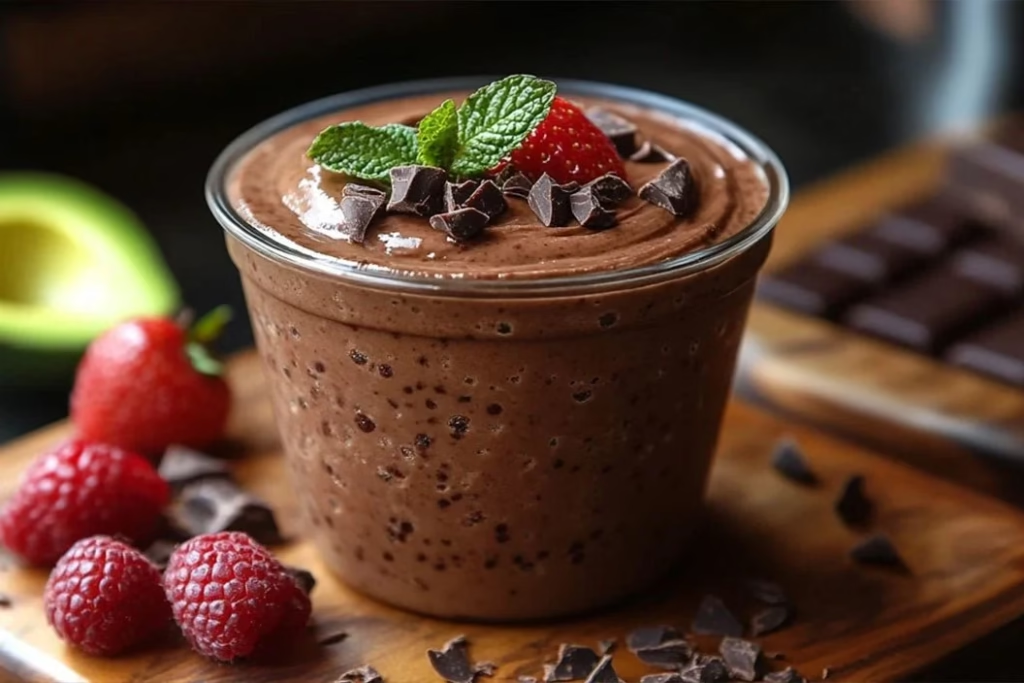
Superfast, naturally creamy, nutrient-dense fats make it satiating. Avocado is the thickening agent instead of sugar-laden chocolate pudding mixes. It’s a universal favorite for people avoiding added sugar.
Ingredients (serves 4)
- 2 large ripe avocados, peeled and pitted
- 1/3 cup unsweetened cocoa powder or cacao powder
- 2–4 tablespoons erythritol or powdered monk fruit blend (adjust to taste)
- 1 teaspoon vanilla extract
- 2 tablespoons unsweetened almond milk (more if needed)
- Pinch of sea salt
- Optional: 1 tablespoon melted dark (85%+) sugar-free chocolate for extra depth
If you prefer to avoid erythritol because of recent concerns, use monk fruit or stevia blends.
Method
- All ingredients are placed in a blender or food processor.
- Blend until completely smooth; add almond milk a teaspoon at a time to reach the desired texture.
- Chill for 15–30 minutes; serve topped with raspberries or toasted nuts.
Serving and notes
- Best for low-carb and vegan diets.
- Calories come from avocado; whole-food fats will slow glucose spikes.
- Use powdered sweetener for silkier texture.
2) No-Bake Sugar-Free Cheesecake Cups — creamy, make-ahead crowd pleaser
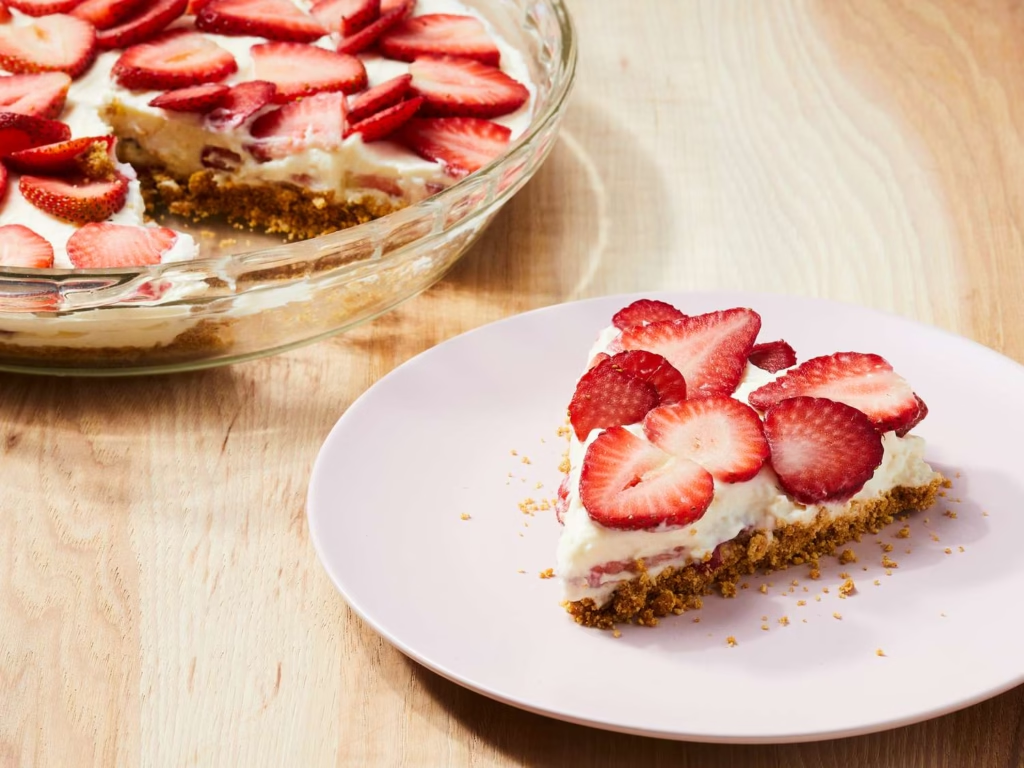
Classic cheesecake flavor without added sugar; texture is rich and sliceable when set. Popular on recipe lists for sugar-free desserts.
Ingredients (8 small cups)
Crust (optional low-carb crust)
- 1½ cups almond flour
- 3 tbsp melted butter or coconut oil
- 2 tbsp powdered erythritol or monk fruit
Cheesecake filling
- 16 oz (450 g) cream cheese, softened (or dairy-free cream cheese)
- 1 cup sour cream or Greek yogurt (or coconut cream for dairy-free)
- 1/2–3/4 cup powdered erythritol or monk fruit sweetener
- 1 tsp vanilla extract
- Zest of 1 lemon (optional)
Method
- Crust ingredients are mixed and pressed into the bottom of small serving cups; chilled to set.
- Cheesecake filling is beaten until smooth, then spooned onto chilled crusts.
- Refrigerate at least 4 hours; garnish with fresh berries (note: berries contain natural sugars).
Serving and notes
- Can be made ahead for events.
- Use nut-based crusts for grain-free and lower carbs.
- Suitable for diabetics when portioned; still contains calories from dairy.
3) Berry & Chia Seed Pudding — fiber-rich, naturally sweetened
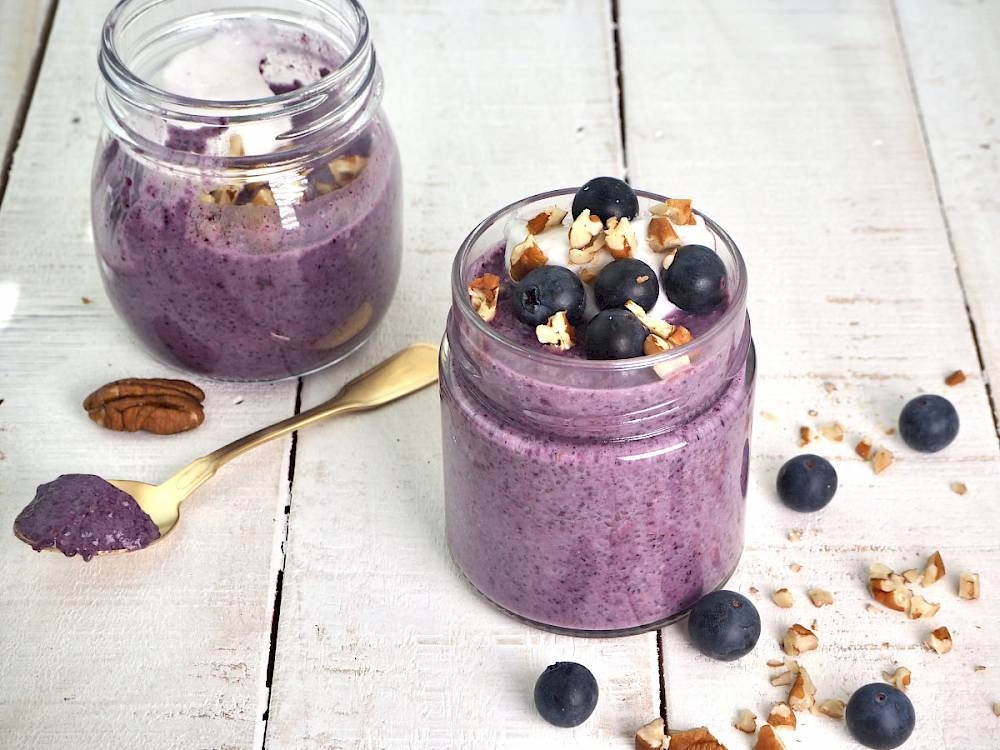
Uses the natural sweetness of berries with chia’s gel texture — no added sugar needed if berries are used sparingly. The fiber content will slow carbohydrate absorption.
Ingredients (serves 4)
- 3 cups unsweetened almond milk (or any milk)
- 1/2 cup chia seeds
- 1 tsp vanilla extract
- 1 cup mixed berries (fresh or frozen, thawed)
- Optional: 1–2 tbsp monk fruit or allulose if extra sweetness desired
Method
- Milk, vanilla, and chia are whisked together and left to thicken for at least 2 hours (or overnight).
- Puree half the berries and fold into the pudding for natural sweetness and color.
- Serve topped with whole berries and a sprinkle of toasted coconut.
Serving and notes
- Excellent breakfast or dessert.
- Naturally lower in added sugars; watch portion size for total carbs.
4) Flourless Almond Brownies (sugar-free) — fudgy and dense
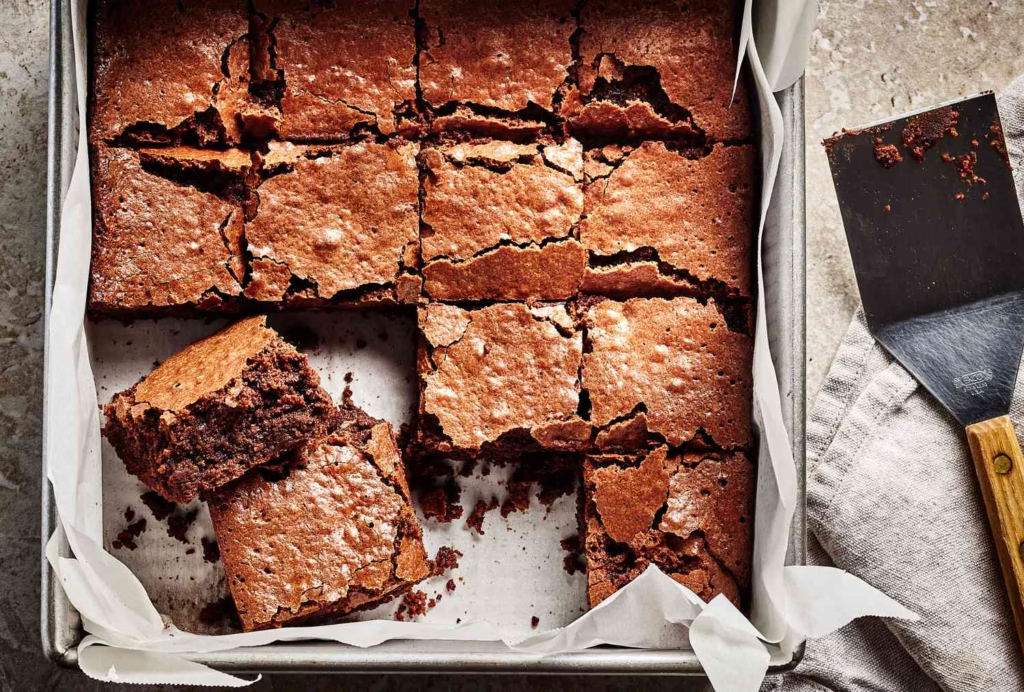
Dense, chocolatey brownies without flour or added sugar, using almond flour and sugar substitutes. A popular alternative to traditional brownies for those on low-carb diets.
Ingredients (8–10 pieces)
- 1 cup almond butter or almond flour (if almond butter, use 3/4 cup to 1 cup)
- 1/3 cup unsweetened cocoa powder
- 1/2 cup powdered erythritol or monk fruit blend
- 2 eggs (or flax eggs for vegan)
- 1 tsp baking powder
- Pinch of salt
- Optional: 1/3 cup chopped sugar-free chocolate chips (use high-cacao or sugar-free chips)
Method
- Oven is preheated to 350°F (175°C).
- Wet and dry ingredients are combined into a smooth batter, poured into a lined baking pan, and baked ~15–20 minutes.
- Brownies are cooled fully before slicing to improve texture.
Serving and notes
- Keto-friendly variation: replace eggs with extra fat (but eating quality differs).
- Keep slices small; calorie density is high.
5) Coconut-Mango “Nice” Cream (no added sugar) — frozen, scoopable fruit dessert

A frozen dessert made with bananas (optional) or canned coconut cream and mango; naturally sweet without added sugar if ripe fruit is used. Note: If you want strictly “no added sugar,” this qualifies; if you need no natural sugar either (very rare), avoid fruit. Use ripe mango for sweetness.
Ingredients (serves 4)
- 2 cups frozen mango chunks
- 1 cup full-fat canned coconut milk or coconut cream
- Optional: 1 frozen banana for creaminess (contains natural sugar)
- Optional: 1 tsp lime juice or zest
Method
- Frozen mango (and banana if using) is pulsed in a food processor until creamy; coconut cream is added to smooth.
- Scoop immediately for soft-serve texture, or freeze for 1–2 hours for scoopable “ice cream.”
Serving and notes
- Best for those avoiding added sugar but okay with natural fruit sugar.
- For lower carbs, reduce mango and add more coconut cream.
6) Sugar-Free Lemon Bars (with erythritol or allulose) — bright and tangy

A refreshing dessert that’s often made with sugar substitutes to mimic the brightness of traditional lemon bars. Use allulose or powdered monk fruit to avoid cooling effects some report with erythritol.
Ingredients (makes ~9 bars)
Crust
- 1½ cups almond flour
- 3 tbsp butter or coconut oil
- 2 tbsp powdered erythritol or monk fruit
Filling
- 3 eggs
- 1/2 cup lemon juice (fresh)
- 1/2 cup powdered allulose or powdered monk fruit sweetener
- 2 tbsp almond flour (for body)
- Zest of 1 lemon
Method
- Crust is pressed into a pan and baked briefly.
- Filling is whisked and poured over pre-baked crust, then baked until set.
- Cool completely and chill before cutting.
Serving and notes
- Allulose is favored by many bakers because it browns and behaves more like sugar.
- Portion control is important; even sugar-free bars can be calorie-dense.
7) Peanut-Butter Fat Bombs — portable, keto snack/dessert
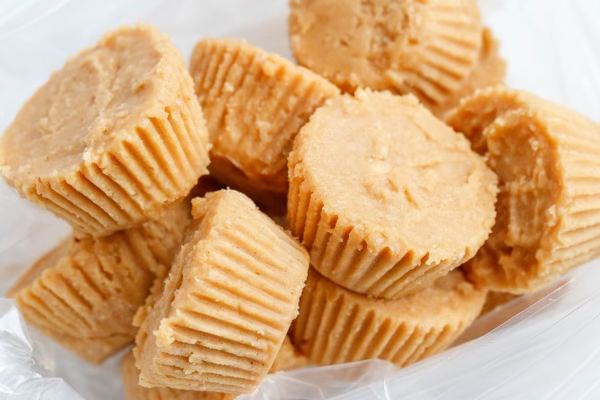
No added sugar, fat-forward bites that satisfy sweet cravings. Simple to make and ideal as portioned treats. Popular in keto communities for quick energy.
Ingredients (makes 12)
- 1 cup natural peanut butter (or almond butter)
- 1/4 cup coconut oil, melted
- 2–4 tbsp powdered erythritol or monk fruit blend
- 1 tsp vanilla
- Pinch of salt
Method
- Ingredients are whisked together, poured into a silicone mold or lined mini muffin tin, and frozen until solid.
- Stored in the freezer, enjoyed straight from cold.
Serving and notes
- High in fat — so portion as a treat.
- Swap peanut butter for sunbutter for nut-free option.
8) Baked Cinnamon Apples with Walnuts (no added sugar) — oven-warmed comfort
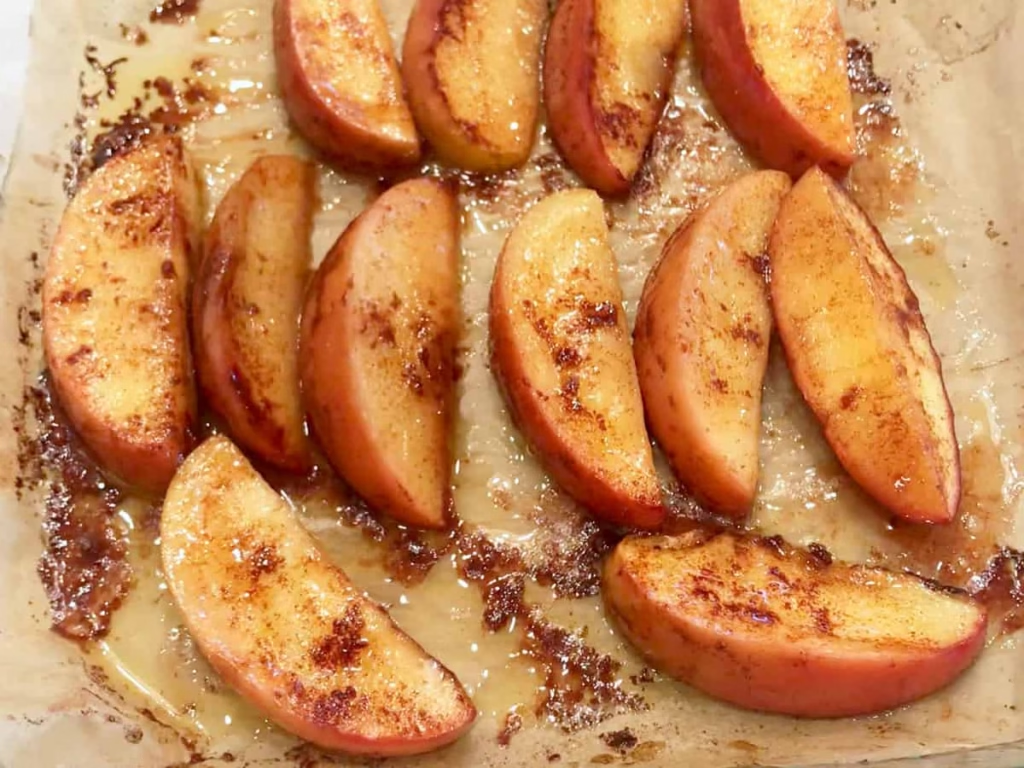
Uses the natural sweetness of apples; warming spices and toasted nuts provide satisfaction without added sugar. This is a “no added sugar” dessert, not zero sugar (fruit sugar present). Great when you want something cozy and wholesome.
Ingredients (serves 4)
- 4 medium apples (Fuji, Gala or Honeycrisp for natural sweetness)
- 1 tsp ground cinnamon
- 1/4 cup chopped walnuts or pecans
- 1 tbsp lemon juice
- Optional: 2 tbsp raisins (contain sugar) or unsweetened applesauce for extra moisture
Method
- Apples are cored and stuffed with nuts, cinnamon, and lemon; baked at 375°F (190°C) for 25–30 minutes until tender.
- Serve warm with a dollop of unsweetened Greek yogurt.
Serving and notes
- A family-friendly dessert that reads like comfort food.
- For diabetics, pair with protein (yogurt or cottage cheese) to blunt glucose spikes.
9) Sugar-Free Crème Brûlée (with erythritol or allulose) — elegant and satisfying

Classic custard that’s luxurious but can be adapted with non-caloric sweeteners; finishing sugar can be swapped for allulose, which caramelizes better than many sugar substitutes.
Ingredients (serves 4)
- 2 cups heavy cream or coconut cream for dairy-free
- 5 egg yolks
- 1/3 cup powdered allulose or powdered monk fruit
- 1 tsp vanilla extract
- Optional: zest of orange or cinnamon
Method
- Cream is warmed with vanilla; temper the yolks and sugar substitute, then bake the custard in a water bath at 325°F (160°C) until set.
- Chill; before serving, sprinkle a thin layer of allulose and torch to caramelize (allulose browns more like sugar).
Serving and notes
- Best for special occasions.
- Allulose is often recommended for caramelizing finishes.
10) Sugar-Free Coffee Panna Cotta — silky, cafe-style dessert
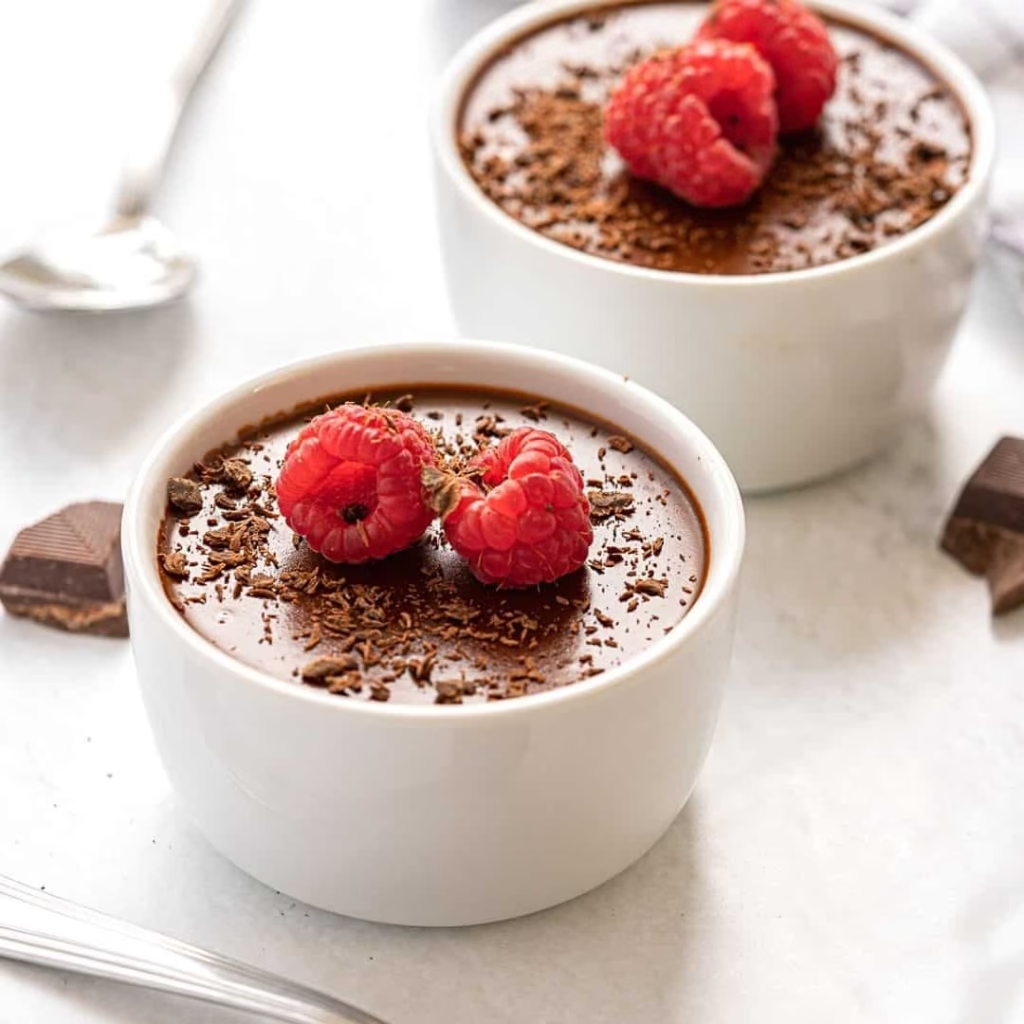
A simple, adult dessert that highlights coffee flavor with gelled cream; no added sugar is needed if using strong brewed coffee and a sugar substitute. Elegant and make-ahead friendly.
Ingredients (serves 4)
- 2 cups cream or coconut milk
- 1/2 cup strong brewed coffee (cooled)
- 2–3 tbsp powdered monk fruit or erythritol
- 1 tbsp gelatin (or agar agar for vegan)
- 1 tsp vanilla
Method
- Gelatin is softened in cold water. Cream and sweetener are warmed gently and combined with coffee. Gelatin is dissolved into the warm mix.
- Poured into molds and chilled until set.
Serving and notes
- Serve with shaved dark chocolate (sugar-free if desired) or a dusting of cocoa.
- Gel setting may vary; follow package instructions for agar vs gelatin.
Final thoughts and a responsible note
Sugar-free desserts can be delicious, satisfying, and compatible with health goals — but they are not a license to overconsume. The food industry has responded to consumer demand with many sugar-free products, and culinary creativity has made it easier than ever to make indulgent treats at home without added sugar. At the same time, consumers should pay attention to sweetener types and recent scientific developments (for example, the erythritol research and ongoing regulatory reviews), and make informed choices that match personal health needs. When in doubt, choose whole-food approaches (fruit-forward, fat-balanced) and consult a healthcare professional for personalized dietary guidance.
Read more trending Health News here.
![]()



